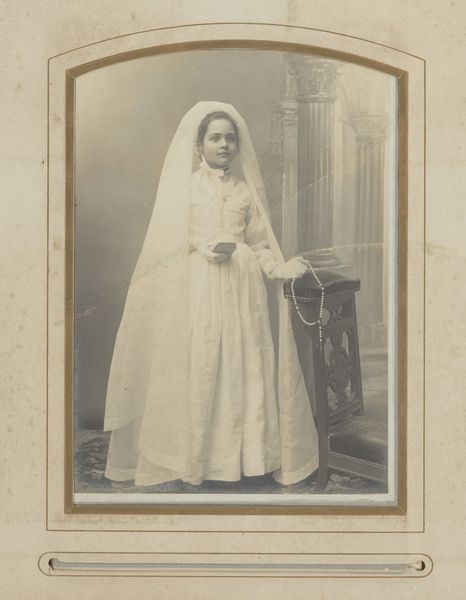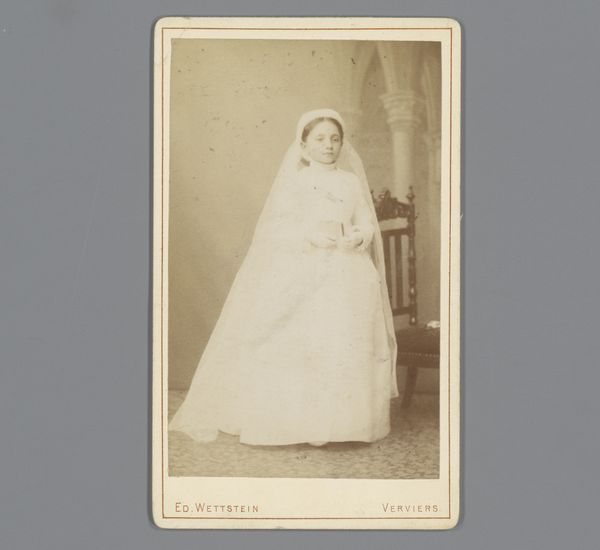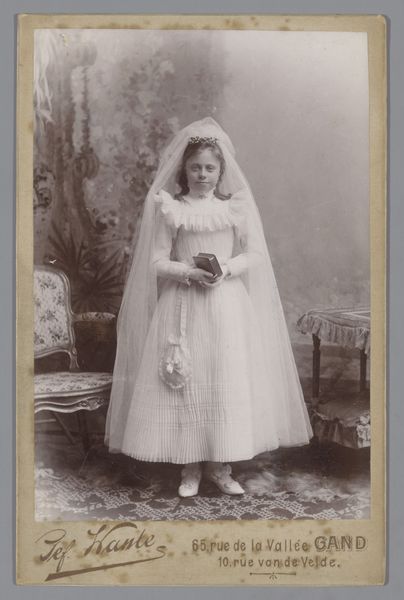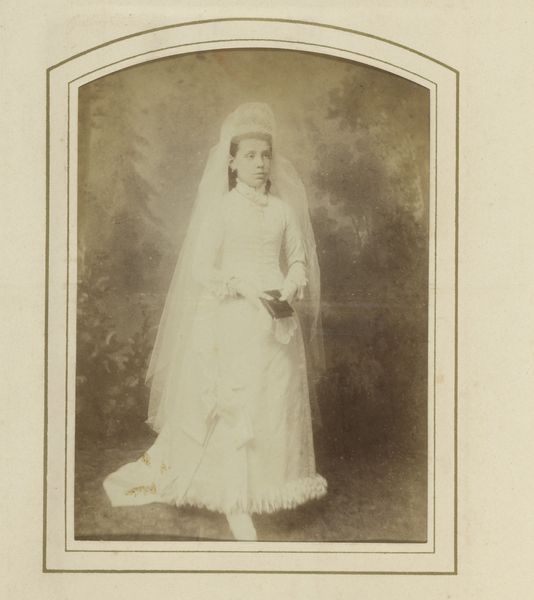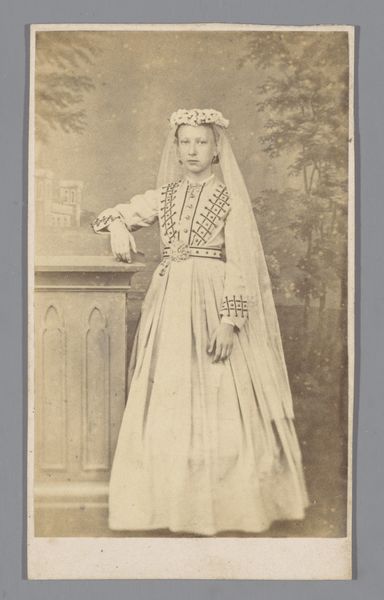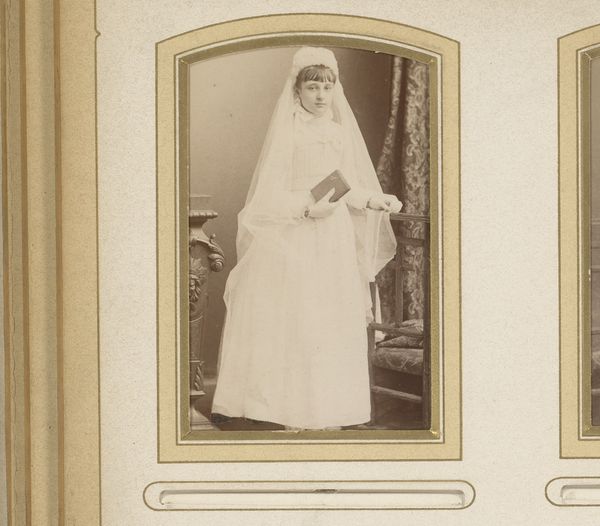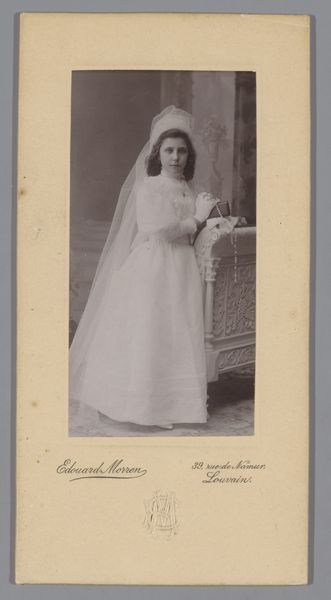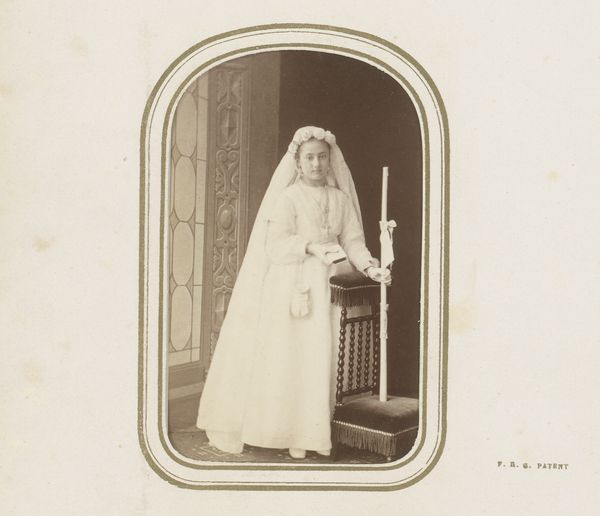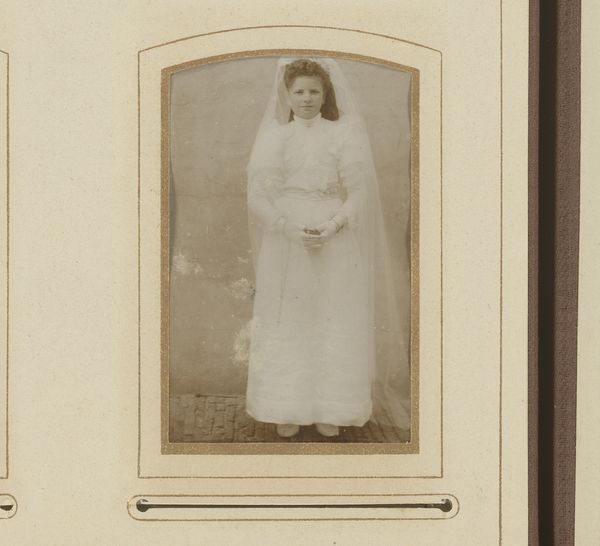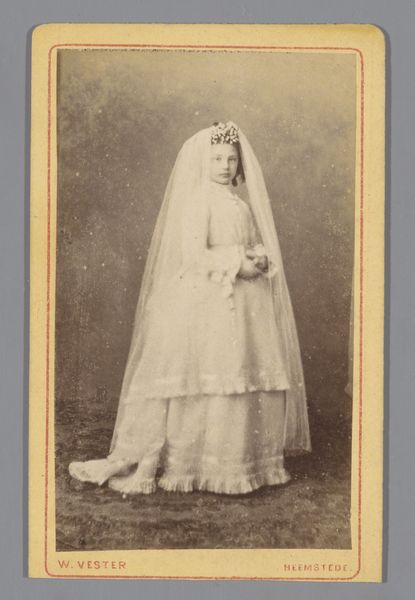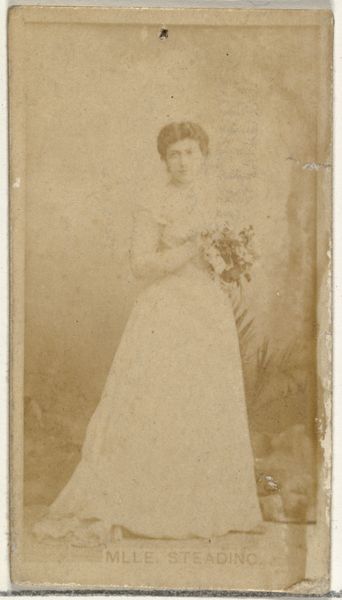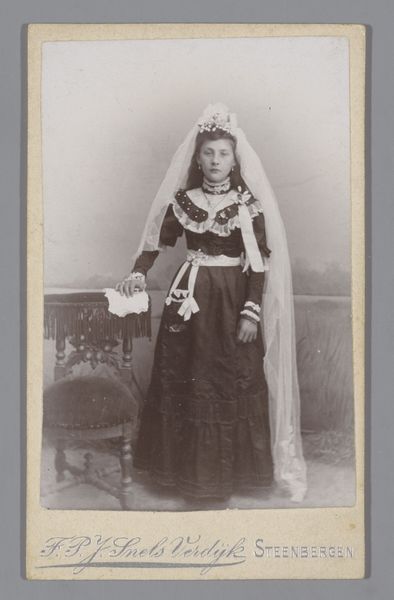
photography, gelatin-silver-print
#
portrait
#
figuration
#
photography
#
historical photography
#
gelatin-silver-print
#
academic-art
Dimensions: height 139 mm, width 98 mm
Copyright: Rijks Museum: Open Domain
Curator: Here we have a photograph titled "Portret van een staand meisje in communiejurk," or "Portrait of a Standing Girl in Communion Dress." It’s a gelatin silver print dating from approximately 1890 to 1903, created by Onnes Kurkdjian. Editor: There’s a striking formality to it. She stands so stiffly in her white dress and veil, clutching a book and what looks like a small purse. It's quite moving. Curator: Yes, formal portraits like this were a significant part of bourgeois culture then. The photographic portrait itself became a rite of passage. To have one's likeness captured in such a manner was an assertion of social standing. This particular image seems imbued with innocence and purity, which were heavily emphasized ideals for young girls within this socio-cultural context. Editor: And that context feels very controlled, almost restrictive. We're seeing her framed, quite literally, not just by the photo’s border, but by these constructed expectations around gender and religion. The pristine white dress, the veiled face... it speaks volumes about the limited roles deemed acceptable for women in that era. It makes me think of Victorian mourning rituals, how tightly they were wound around performances of femininity. Curator: Exactly, this image encapsulates the codification of those feminine roles through public performance and documentation. Though, on the other hand, photographic portraiture was also becoming more accessible, providing opportunities for individuals to construct their own image and, in a way, participate more actively in the representation of self within the larger social sphere. Editor: But how much agency did this young girl truly have in this process? Who determined how she stood, what she wore, even her expression? I am curious to know more about her personal experiences beyond the lens. The photograph serves as both artifact and art object, capturing her physical presence and encoding complex ideas about social norms, expectations, and the subtle yet significant power dynamics at play during the sitting. Curator: Indeed. While this single photograph tells a certain story, a story influenced by the socio-political norms of its time, viewing it within the larger context of burgeoning portrait photography in that era encourages us to think about who had access, whose stories were being told, and what purpose these visual records served. Editor: Absolutely. It reminds us that even seemingly simple images carry layers of cultural meaning.
Comments
No comments
Be the first to comment and join the conversation on the ultimate creative platform.
